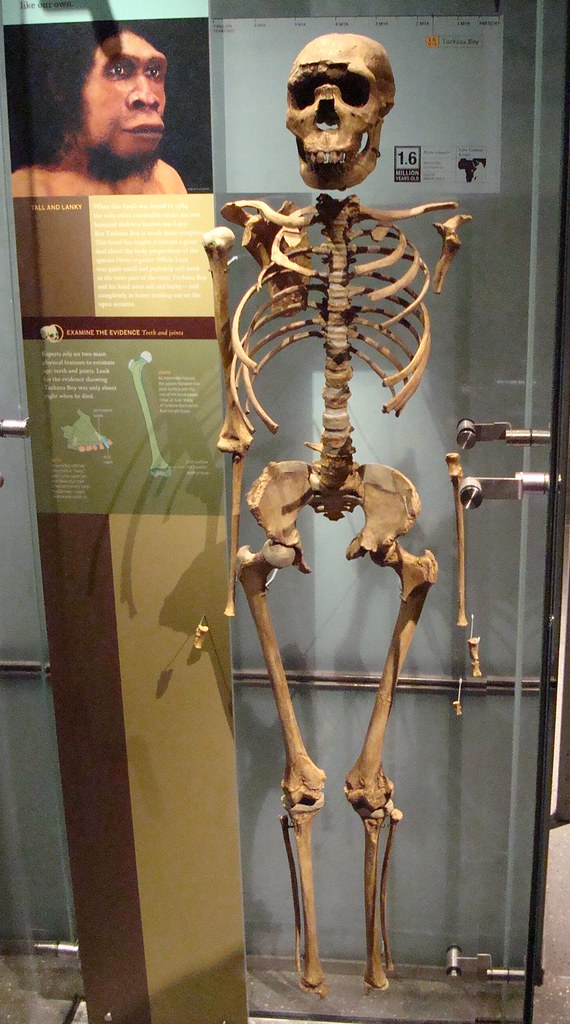Difference between revisions of "8. What physical changes did H. erectus develop?"
| Line 10: | Line 10: | ||
| − | Sources: History Manual pg 29, Flickr(image credit) | + | Sources: History Manual pg 29, Flickr (image credit) |
By Brianna Baskin | By Brianna Baskin | ||
Latest revision as of 07:44, 21 October 2015
History 8 Video Notes Becoming Human
African fossils of Homo erectus have demonstrated the appearances of different physical traits that those of Homo habilis or of Australopitheciens, traits which so far best resemble those of modern humans. These hominids possess elongated legs and shorter arms compared to the torso. These traits may have appeared as a result of the loss of the need to climb trees and the increased need to walk long distances. With longer arms one could possess a greater reach, especially useful for reaching branches, but with longer and stronger legs, one could be able to support themselves for a longer time without rest, especially useful on longer hunts for food. The size of the braincase also increased from 800cc (Homo habilis) to 950cc. Another physical feature of Homo erectus is the prominent browridge, found in the famous Turkana Boy. Although many consider Homo ergaster and Homo erectus as the same species, there are a few physical differences between the two, such as thinner bones of the skull and the lack of an obvious depression behind the browridge.

The Turkana Boy
Sources: History Manual pg 29, Flickr (image credit)
By Brianna Baskin